Judith – Hanukkah’s Wonder Woman
Judith – Hanukkah’s Wonder Woman
The history is murky, the action would be rated PG16 for the violence alone. But a city in lockdown, a fearsome enemy and a woman of valor saving the day? That, right there, is the stuff of inspiration.
My grandson Dan, who was learning about Hanukkah in kindergarten in preparation for the holiday, called me with a question: “Who had the biggest army in ancient times…the Romans or the Greeks?” I told him I guessed that would have been the Romans, but even I wasn’t there to count the troops. “OK, so who destroyed the Second Temple? The Greeks or the Babylonians?” Well, actually, that was the Romans…”But who?…” Thankfully, the call to bath time cut short the march of villains and the rest of my history lecture had to be postponed.
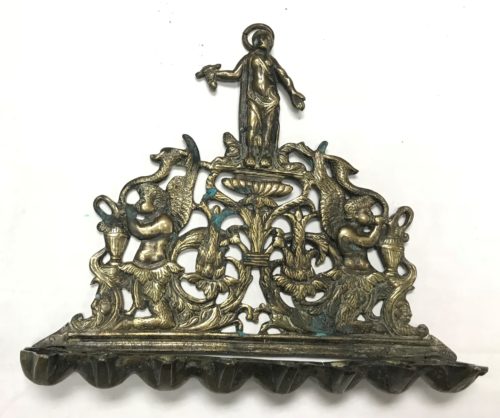
Little Dan is in good company in his mash-up of Jewish history. The book of Judith – the story of a woman who saved her people’s lives at the risk of losing her own – is so closely connected with Hanukkah that she’s been depicted on ancient Hanukkah menorahs. She’s also the subject of an ancient rabbinic tale (midrash) read during Hanukkah. Yet the Temple that was purified on Hanukkah didn’t even exist in her presumed day. And Nebuchadnezzar, the evil Assyrian king mentioned in the first verse of the book of Judith, was actually Babylonian. But his delusions of divinity remind us of Antiochus Epiphanes, the Seleucid Greek villain of the Hanukkah story as told in Maccabees, and after all, Antiochus had the same career goal, In Judith, Nebuchadnezzar’s general Holofernes lost both his battle and his head, and so did the Seleucid Greek general Nicanor, who fought the Maccabees. And the parallels continue, right down to the similarity of names of the holiday’s heroine – Judith – and its hero, Judah (the Maccabee).
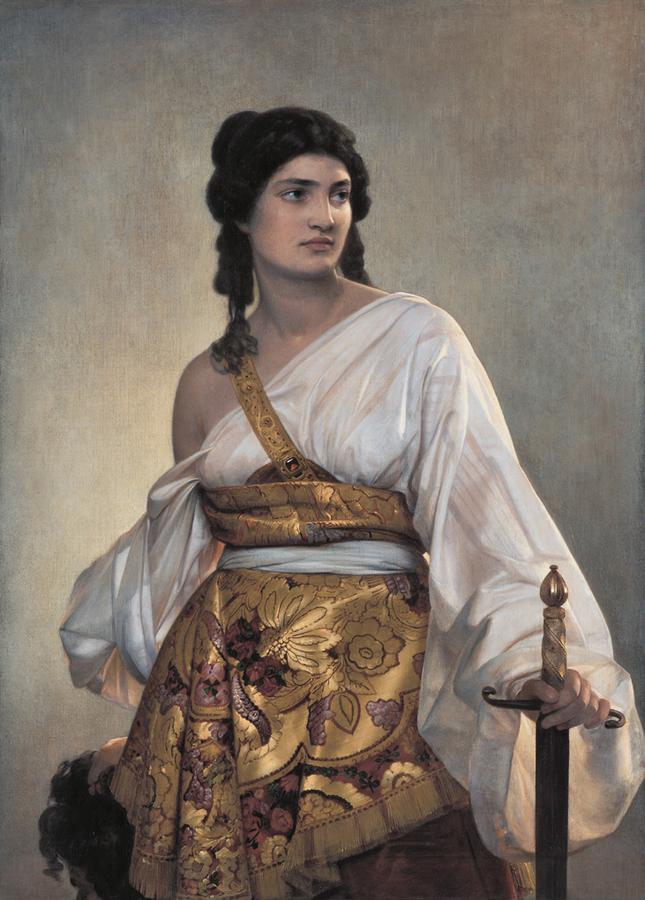
Ratcheting up the literary tension, we don’t even meet Judith until halfway through the book that bears her name. The people of a town called Bethunia are called upon by the powers that be in Jerusalem to protect the strategic mountain pass straddled by their town in the foothills of Samaria, just south of the Jezreel Valley. The enemy general Holofernes puts them under a horrific siege, and prepares to pounce.
In this case, the people’s leaders apparently take the terrifying threat seriously. The high priest in Jerusalem and the governor of Bethulia seem to have done everything in their power against the enemy, both in prayer and action. But this time, something more is needed. Someone extraordinary. Enter Judith, a beautiful, pious, wealthy widow. First she berates the city’s leaders for their lack of faith. Then she hatches a plan. She exchanges her widow’s weeds for finery fished from her cedar closet, and armed with faith, prayer, a picnic basket and her servant woman, she heads straight for the enemy camp. Holofernes’ flabbergasted sentries escort her inside, straight to the general’s tent. She meets him and establishes her bona fides as a double agent. He offers her hospitality in his tent, but when she demurs, she is given her own quarters. She spends the next three days in the enemy camp, praying and preparing for the fateful task she has set herself.
On the fourth day, Holofernes can no longer contain his desire for the mysterious woman of the people he hoped to vanquish, and invites her to a banquet. Judith brought along the above-mentioned picnic basket (a sack actually) – including, according to tradition, some cheese. Since we’re in the Greek arena, we’ll call it very salty feta – because her plan was to make sure Holofernes got good and thirsty. In those days, thirst was more likely slaked with wine than with water, and indeed, Holofernes drinks to delirium. Judith then cuts off his head with his own sword, stuffs it into her food sack, and returns to Bethulia. After that, she executes a successful attack on the Assyrian camp and the enemy scatters in panic. Amid much singing, dancing and timbrel-playing – all the way to Jerusalem – Judith is hailed by all. Eventually she returns to her hometown where she lived long (until 105) and prospered. Happy coda: The people lived in peace for many years after she died.
Say Cheese
The cheese in the provisions Judith brought to the camp, according to the midrash, may have given a special custom to some Jewish communities – of eating dairy products on Hanukkah, even before the advent of Hanukkah pancakes (latkes) and special jelly donuts, both fried in oil to recall the miraculously long-burning oil lamp of Hanukkah. We’re told that in some North African Jewish communities the seventh night of Chanukah became known as Chag Habanot, the Festival of the Daughters, celebrated by women with a cheese-centered feast. Such a women’s festival makes even more sense when we realize that the end of Hanukkah falls on the new moon (the beginning of the Hebrew month of Tevet), a traditional women’s holiday, which Judith herself apparently celebrated (Judith 8:6).
In the best narrative tradition – brought to life in a rich array of adaptions throughout the centuries, this is a story of transformation: Judith was a socially distancing widow who spent her days in prayer and fasting. But when events summon her, she risks her honor and her very life to defeat the enemy. Triumphantly, she returns home, where she lived happily ever after.
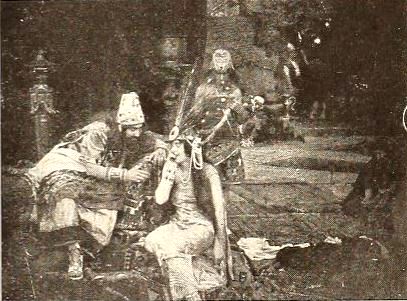
as Holofernes and Blanche Sweet as Judith. Photo: Wikipedia.
Part of the Miracle
The Talmud (Shabbat 23a) says women may also light the Hanukkah menorah because “they too were included in the miracle of being saved from persecution.” But the medieval scholar Rashi takes it one step further, saying that women, as well as men, are required to light the menorah because “a woman brought about the miraculous rescue.”
Thankfully, we live in a time where decapitation and other gruesome forms of payback are not what is required of us to put evil out of action. But if the story of Judith puts you in mind of Jael, Deborah, Miriam and Esther, it’s no coincidence. Judith combines all that is admirable in our biblical heroines. She belongs to the gallery of the biblical women I like to call “advanced-level survival skill instructors” whose lessons of faith and courage we need now more than ever.


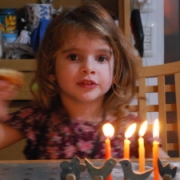
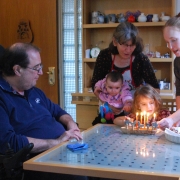
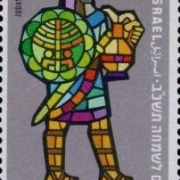
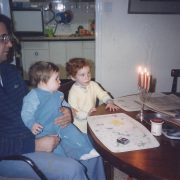
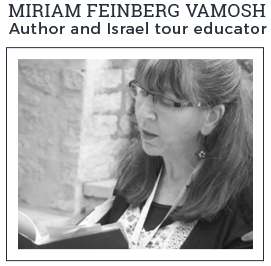
Greetings — Thank you for this post. A fascinating subject, indeed. A couple of comments from a historical perspective:
The post mentions “parallels”; it was very common in the ancient world to name characters after people from long before, especially in adapted tales, in order to avoid being accused of capital crimes like sedition (seeking to overthrow the government/king). The book of Judith, then, can be seen as part satire, part conglomeration of older stories — Yael/Devorah, Esther, etc. — with a few new names, but older names for the villains, to avoid drawing the attention of foreign rulers. People in ancient times weren’t so concerned about documented facts, as we are today, but with meanings and lessons they would call truths.
References to sources for this piece would have been helpful. For example, “We’re told that in some North African Jewish communities…” leads to a great nugget of info. But what’s the source? And which North African Jews — Morroccan, Algerian, Egyptian, Libyan? If this was something you heard in a personal conversation, it’s fine to list it as a private conversation or correspondance, although most helpful if you say it was told by someone from a particular culture, or if you saw it on the news, etc. As a historian I’d love to inform more people of this custom, but “I read it on a website” isn’t something I can use for verification. I’ll do the background research, but it would be a service to all — and respectful of your sources — if you would properly list where you found the info.
Technically, btw, Judith isn’t called a “biblical” woman, since we don’t include this book in the Tanakh (although some Christians — Roman Catholics, mainly — use the apocryphal texts in their Bible). Quite interesting, too, that Christians have been so taken by Judith’s story. Similarly, the tale of Hannah and her sons, another Hanukkah tale that doesn’t end so happily, was kept alive by the early Christian church, more than it was by Jews, until centuries later. There’s even ancient Christian art depicting Hannah and her sons as martyrs. This may have been because the Jews, recently exiled from Eretz Israel and trying to avoid persecution by the Romans, avoided speaking of rebellions against rulers. The story of Judith, likewise, disappeared among Jews until the Medieval period.
Overall, a nice reading that reinforces how strong our foremothers were in the face of oppression.
Thank you so much for your informative comments. I’m sure my readers will be very interested in them. In answer to your question about the source of my information on the customs of North African women, the source is an article by Rabbi Jill Hammer from the website https://www.ritualwell.org/ritual/chag-habanot-festival-daughters. I am very grateful for her research that enabled me to add this little gem to enrich my readers.